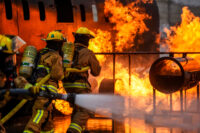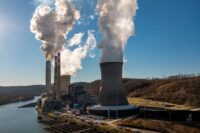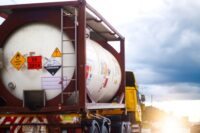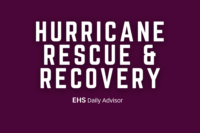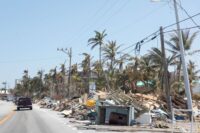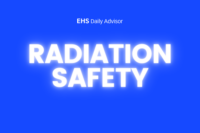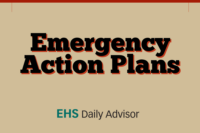Category: Emergency Preparedness and Response
No one wants it to happen, but an emergency, natural or manmade, can strike at anytime, 24/7. What’s more, it need not be a major, nationally-televised incident, such as a hurricane, earthquake, or act of political terror. An event as common as a local building fire can present just as large a challenge to you. These resources will help you create a plan for handling such crises, whatever their scope, and to carry it out in a way that best protects your employees and your company.
Free Special Report: 50 Tips for More Effective Safety Training
On July 17, the U.S. Chemical Safety and Hazard Investigation Board (CSB) released an update on its investigation into a January 2023 explosion and toxic chemical release at the Honeywell Performance Materials and Technologies facility in Geismar, Louisiana. A reboiler at the facility exploded, leading to the release of over 870 pounds (lb) of hydrogen […]
The EPA recently announced four final power plant rules (PPR) to reduce pollution from fossil fuel-fired power plants, with the goal of protecting “communities from pollution and improve public health without disrupting the delivery of reliable electricity,” according to an Agency news release. These rules are part of the Biden administration’s push to transition to […]
On June 14, OSHA cautioned emergency responders, recovery workers, and residents in areas of Florida recently flooded by intense rainfall to exercise caution when facing the hazards of a storm’s aftermath. Once storms subside, workers are needed to restore electricity, communications, water, and sewer services. These activities may involve removing standing floodwater from structures, performing […]
In March 2024, the EPA issued its final Safer Communities by Chemical Accident Prevention Rule (SCCAP rule), which became effective on May 10, 2024. The SCCAP rule amends the Risk Management Program (RMP) regulations that were established to prevent the accidental release of toxic and explosive substances, reduce the severity of any accidents that may […]
Forecasters are predicting a busy hurricane season this year, so you should make sure your workplace is prepared for a hurricane and its aftermath. Here’s what you need to know about rescue and recovery operations after a hurricane hits.
Back to Basics is a weekly feature that highlights important but possibly overlooked information that any EHS professional should know. This week, we examine how to prepare for the upcoming hurricane season. Is your workplace ready for up to 25 named storms this year, including seven major hurricanes (category 3, 4, or 5) with winds of […]
Radiation emergencies include nuclear and radiological events in which there is (or there is the perception of) a hazard from a nuclear explosion, release of radioactive material, or unintended exposure to another type of radioactive source. Here’s what you need to know about radiation safety.
Back to Basics is a weekly feature that highlights important but possibly overlooked information that any EHS professional should know. This week, we examine how to prepare your workers for a radiation emergency. A radiation emergency is a non-routine situation in which radiation is released or there is other risk of exposure to radiation, according to […]
On March 25, the National Safety Council (NSC) announced it’s ramping up its efforts to combat overdoses in the workplace, launching several new initiatives. These initiatives include free opioid overdose eLearning resources, an online workplace well-being hub, and the availability of bulk online purchasing of Narcan® (naloxone) nasal spray for employers nationwide. According to the […]
When it comes to workplace fire preparedness, OSHA vigorously enforces its exit routes and emergency planning standards (29 Code of Federal Regulations 1910 Subpart E). Subpart E also includes requirements for emergency action and fire prevention plans. Here’s what you need to know about emergency action plans.

